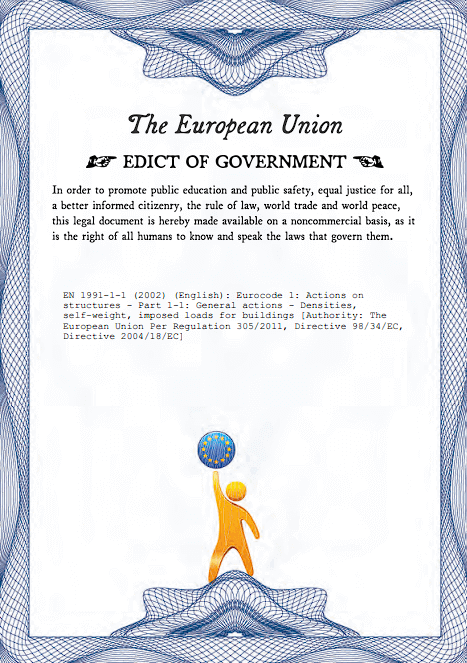UK National Annex to Eurocode 3: Design of steel structures. Part 1-1: General rules and rules for buildings.

Download file below
Part 1-1: General rules and rules for buildings.Eurocode 3: Calcul des structures en aeier – Partie 1-1: Regles gE’merales et regles pour les batiments Eurocode 3: Bemessung und Konstruktion von Stahlbauten – TeiI1-1: Allgemeine Bemessungsregeln und Regeln for den Hochbau
CEN members are bound to comply with the CEN/CENELEC Internal Regulations which stipulate the conditions for giving this European
Standard the status of a national standard without any alteration. Up-to-date lists and bibliographical references concerning such national standards may be obtained on application to the Central Secretariat or to any CEN member. This European Standard exists in three official versions (English, French, German). A version in any other language made by translation under the responsibility of a CEN member into its own language and notified to the Central Secretariat has the same status as the official versions. CEN members are the national standards bodies of Austria, Belgium, Cyprus, Czech Republic, Denmark, Estonia, Finland, France, Germany, Greece, Hungary, Iceland, Ireland, Italy, Latvia, Lithuania, Luxembourg, Malta, Netherlands, Norway, Poland, Portugal, Slovakia, Slovenia, Spain, Sweden, Switzerland and United Kingdom.
Eurocode 3, Design of steel structures.
This book introduces the design concept of Eurocode 3 for steel structures in building construction, and their practical application. It especially comments on the regulations of the British National Annexes. Following a discussion of the basis of design, including the limit state approach, the material standards and their use are detailed. The fundamentals of structural analysis and modeling are presented, followed by the design criteria and approaches for various types of structural members. The following chapters expand on the principles and applications of elastic and plastic design, each exemplified by the step-by-step design calculation of a braced steel-framed building and an industrial building, respectively. Besides providing the necessary theoretical concepts for a good understanding, this manual intends to be a supporting tool for the use of practicing engineers. In order of this purpose, throughout the book, numerous worked examples are provided, concerning the analysis of steel structures and the design of elements under several types of actions. These examples will provide for a smooth transition from earlier national codes to the Eurocode.
This document (EN 1991-1-1 :2002) has been prepared by Technical Comn1ittee CEN/TC 250 “Structural Eurocodes”, the secretariat of which is held by BSI. This European Standard shall be given the status of a national standard, either by publication of an identical text or by endorsement, at the latest by October 2002, and conflicting national standards shall be withdrawn at the latest by March 2010.
CEN/TC 250 is responsible for all Structural Eurocodes. This document supersedes ENV 1991-2-1: 1995. The annexes A and B are informative. According to the CEN/CENELEC Internal Regulations, the national standards organizations of the following countries are bound to implement this European Standard: Austria, Belgium, Czech Republic, Denmark, Finland, France, Gern1any, Greece, Iceland, Ireland, Italy, Luxembourg, Malta, Netherlands, Norway, Portugal, Spain, Sweden, Switzerland and the United Kingdom.
Download file here

